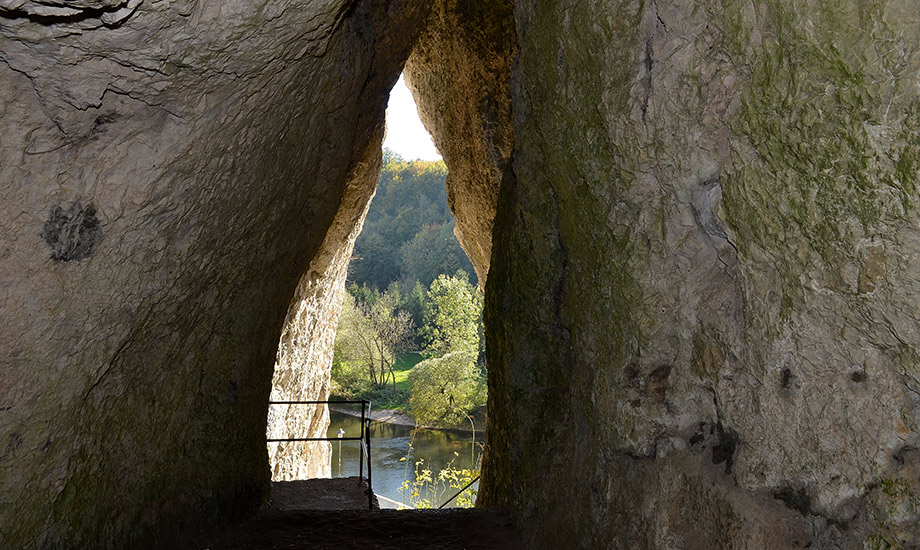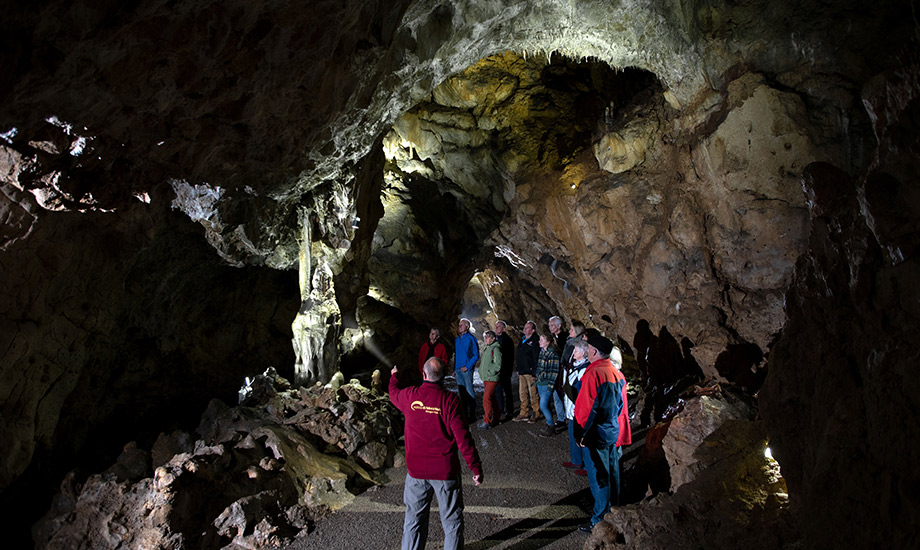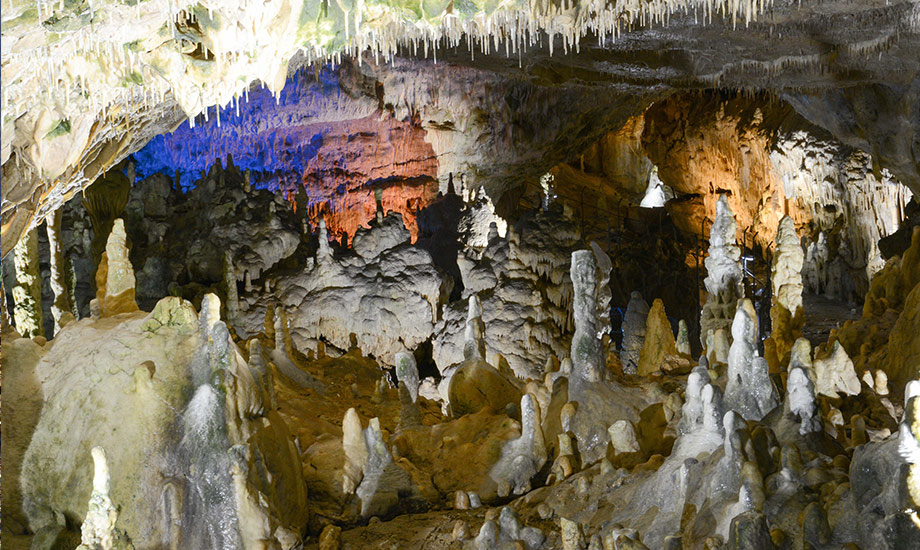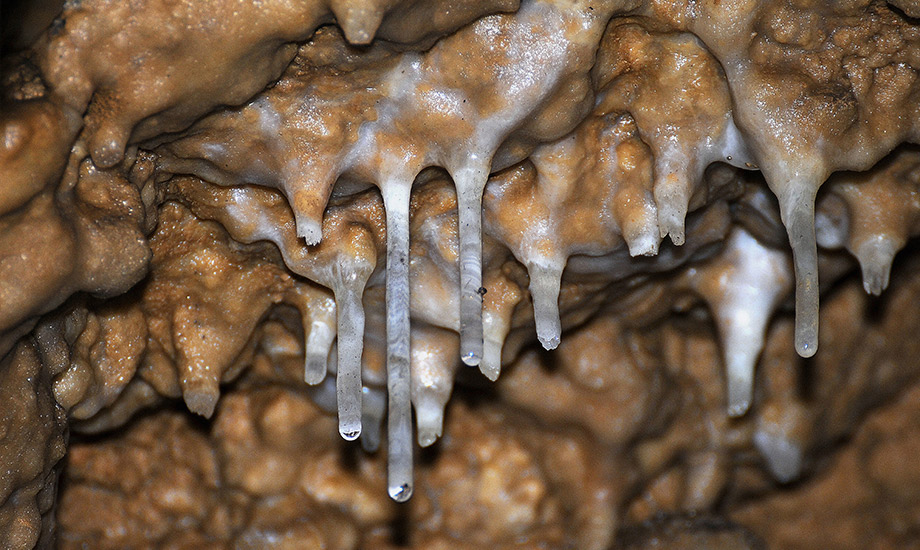Caves as habitat
Caves are naturally formed cavities in rock. Their size can vary greatly, from the size of a man to kilometer-long connected cave systems. Artificially dug cavities are not called caves, but "tunnels" or "galleries". Caves are formed either by the dislodging of rock (e.g. karst caves) or the formation of rock which opens up a cavity (e.g. limestone tuff caves).
The rocks of the Swabian Alb consist mainly of limestone, which is easily soluble in rainwater, and there is also enough rainfall. Therefore, the low mountain range is strongly karstified and is one of the regions in Europe with the most caves. About 2800 large and small caves have been described. There are special conditions in caves creating special habitats.
Why are there no plants in caves?
There is absolute darkness in caves. Without light plants cannot grow in caves away from the entrance. Cave animals are often colorless because camouflage coloring is of no advantage to them. Their eyes are often receded because they cannot see in the dark. Bats use their sense of hearing to navigate by emitting sound waves that are echoed by obstacles.
Why is it cool in caves?
The temperature in caves is the same all year round. It roughly corresponds to the annual average temperature of the region. In the Swabian Alb around 8-9 °C. An ideal place for animals such as bats to hibernate. Bone finds in caves show that bears also hibernated there during the Ice Age. Ice Age people used caves as shelters because they offered them protection from cold and wind and weather and also predators.
Why are caves archives of climate and human history?
Fossil bones of animals and evidence of Ice Age humans are particularly well preserved in karst caves, so they have survived to the present day. In the constant cool temperature and high humidity of caves, chemical processes run more slowly and organic material does not decompose as quickly. In addition, the destructive influence of wind and weather and the rapid covering with sediments are missing. This is the reason why many finds of early humans are made in caves. By the way, dripstones even preserve information about the climate of past times.



